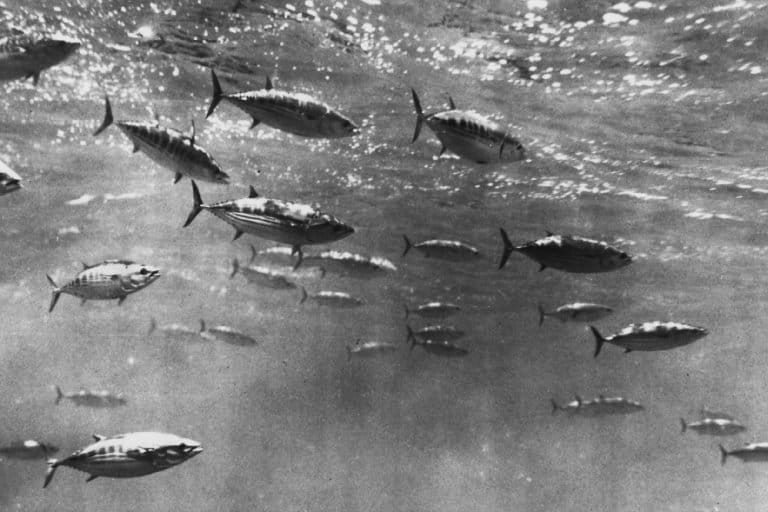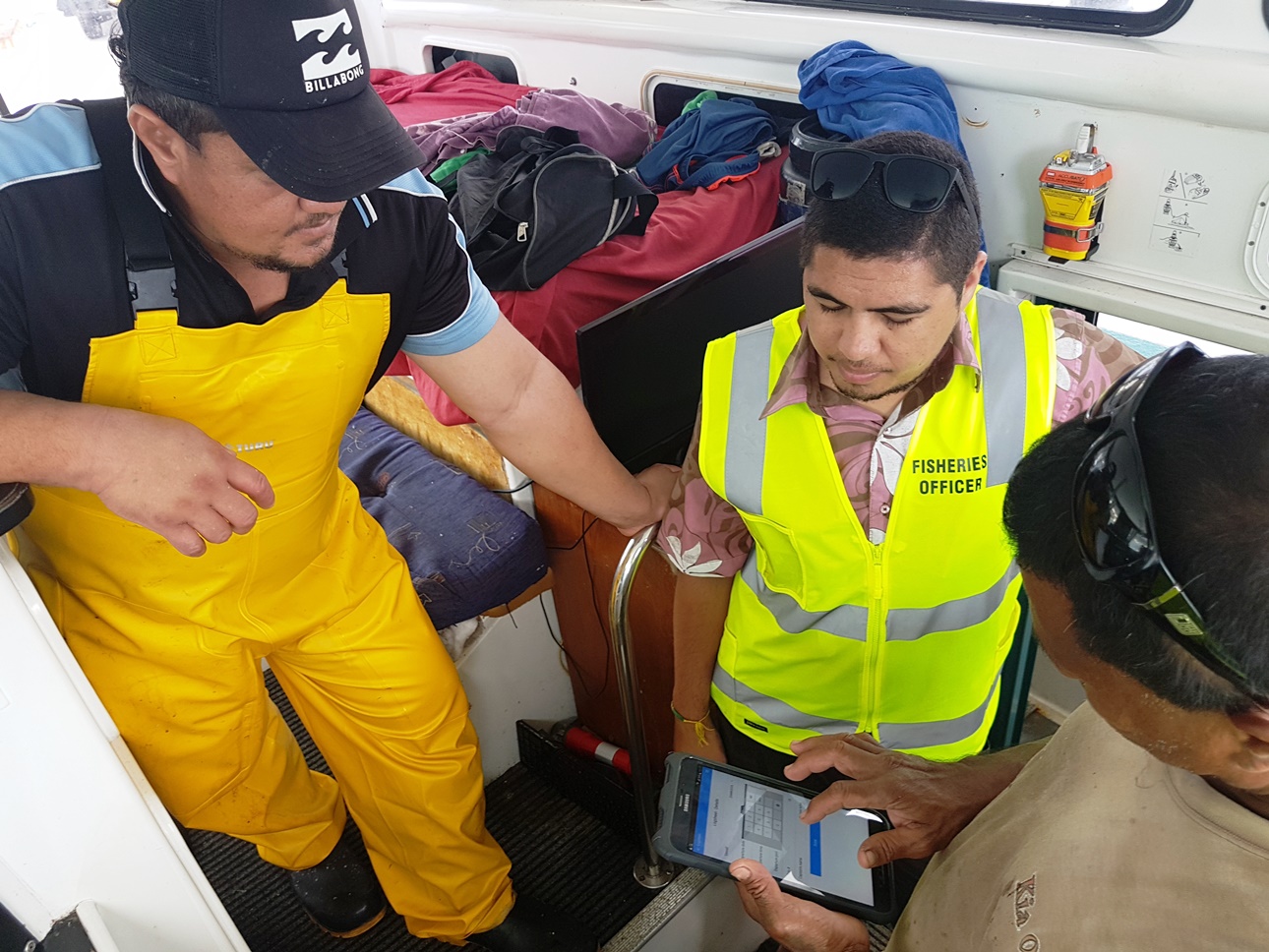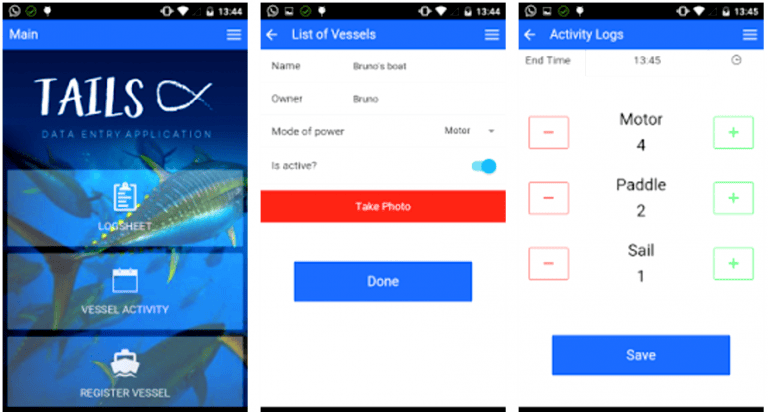- A new electronic monitoring system is being tested in the western and central Pacific to improve the timeliness and accuracy of tuna catch data and the transparency of tuna supply chains through faster more effective on-board and portside catch monitoring.
- Illegal, Unreported, and Unregulated (IUU) fishing results in overharvesting and an annual loss of US $600 million for the region and is perpetrated primarily by licensed vessels hauling in unreported and unregulated fish stock.
- The Onboard, Observer, and TAILS portside e-Reporting apps are still in the testing phase, but their use is expected to expand across the Pacific.
A new electronic approach to monitoring tuna fishing fleets is being tested to improve the timeliness and accuracy of catch data, the transparency of tuna supply chains, and the safety of on-board observers. Key to the new approach are a set of electronic reporting apps for fishing boats and port officials developed in response to this persistent problem.
Illegal, Unreported, and Unregulated (IUU) fishing results in overharvesting and an annual loss of US $600 million for the region. A report by the Pacific Islands Forum Fisheries Agency found that licensed vessels hauling in unreported and unregulated fish stock comprised most of the region’s IUU fishing.
The Pacific Community (SPC), a regional scientific and technical organization focused on development, created the Onboard e-Reporting app for ship captains to electronically report effort and catch data.

A corresponding Observer e-Reporting App, developed by the Integrated Fisheries Information Management System (iFIMS), is for use by on-board fisheries observers in the Pacific. The apps are being tested by the Parties to the Nauru Agreement (PNA), a regional body that manages shared tuna resources, including the world’s largest certified sustainable tuna purse seine fishery.
The western and central Pacific Ocean, where the PNA operates, is home to a variety of tuna species that supply markets around the world and roughly 60 percent of global tuna catches. This initial adoption of electronic reporting will help make near-real time management of this US $7 billion tuna fishery possible.
PNA plans to enable electronic reporting throughout its fleet, with its primary aim to ensure a sustainable fishery. These data are meant to inform and help fisheries managers maintain healthy populations of both the target fish species and the surrounding ecosystem.
Verification of catch data
All PNA purse seine vessels also have independent on-board observers. On-board observers collect data on the number, composition, and size of fish caught by commercial fishing boats, as well as gear used and bycatch.

The e-Reporting apps transmit the data collected by a boat’s crew, skipper, or on-board observer on a digital tablet and transmitted directly to the authorities via satellite. The app replaces the current paper-based record-keeping system and allows users to document and electronically report efforts and catch statistics in real time. The information is then immediately available to officials who can compile catch data and adjust management action in a timely manner.
The Observer app in particular will directly address non-reporting, misreporting, and under-reporting of fish caught, a persistent problem in the Pacific region. A 2016 analysis conducted by the Pacific Islands Forum Fisheries Agency (FFA) showed that Illegal, Unreported, and Unregulated (IUU) fishing resulted in a US $600 million loss for the region and that licensed vessels hauling in unreported and unregulated fish stock were responsible for most IUU fishing.
Although on-board observers have been a standard practice in commercial fisheries for years, recording fish catch with pen and paper and submitting the data to authorities, who then compile and process the information, results in delays between data collection and its availability to policy-makers.
“Currently it may take as long as two years to get some of this current information into the fisheries management system,” Bubba Cook, Western and Central Pacific Tuna Programme Manager for WWF-New Zealand, told Radio New Zealand. “By the time you get that information in, the fishery could have significantly diminished or you could have change conditions that don’t apply.”

“This technology links information collected in the vessel’s log book, the fisheries observer’s report and the port inspector’s report, making real-time electronic catch documentation and supply chain traceability a reality, rather than just a concept,” said Cook in a media release.
“We are implementing electronic reporting across our entire commercial fleet in the next two to three years, and this emerging technology supports our work in accessing and verifying reports from vessels,” Cook Islands Ministry of Marine Resources (MMR) Offshore Division Director, Tim Costelloe, told WWF.
According to Cook, the new app’s direct connection to authorities also provides some measure of security to independent on-board observers as they register not only on stock levels and catch statistics but also validate the boat’s compliance with fishing rules.
More efficient port reporting
A separate app called TAILS, also developed by SPC and provided on rugged tablet computers to fisheries officials in key landing ports around the Pacific. The app complements the on-board monitoring apps by enabling port officials to log the size and composition of each catch hauled in, including the catch and effort data of small-scale artisanal fishers.

“Getting timely and accurate verification and validation of catch records at the point of landing has always been extremely difficult with a paper-based record-keeping system, but now port inspectors can go to the dock and input information that will immediately be fed into management systems,” said Cook in the release.
 |
 |
| SPC’s E-Reporting TAILS Port Sampling Monitoring for longline vessels. Photo credit: SPC – Malo Hosken | |
“Ruggedized tablets, and the associated technology, will support the move towards more efficient data collection systems, allowing fisheries managers to collect more timely and accurate catch and effort data,” said Sarah O’Brien, Pacific Tuna Initiative Senior Manager for Environmental Defense Fund, which supports the project along with WWF.

Outreach and expansion
The PNA is the first fleet in the Pacific region to adopt this technology as part of their fisheries monitoring and management program. Fishing boat captains in PNA member countries are learning to use the OnBoard app to report effort and catch data, while port inspectors are learned to use the TAILS app to collect data on the size and composition of commercial fish landings.
At an SPC workshop in April 2017, Hosken and colleagues trained fisheries officials from nine Pacific countries to use the apps and tablets that they will share with colleagues in their respective countries. WWF and EDF are providing the equipment needed—tablets and satellite transmitters—to enable the captains, observers and port officials in the PNA purse seine fishery to begin using the system.

The NGOs and authorities expect the new electronic reporting system to help reduce IUU fishing that persists in the region.
“The new electronic platforms afforded through ruggedised tablet computers and other mobile devices makes broad application of these technologies in a variety of contexts a reality,” said Cook.
“The transition to fully electronic reporting, [of data] from vessel logbooks [and] observer reports to port inspection, represents the logical step toward full verification and validation of our supply chain in a real time basis,” stated PNA’s commercial manager Maurice Brownjohn in the media release.
The banner image shows skipjack tuna on display in the National Museum of Nature and Science in Tokyo, Japan. Photo credit: Momotarou20120, CC
